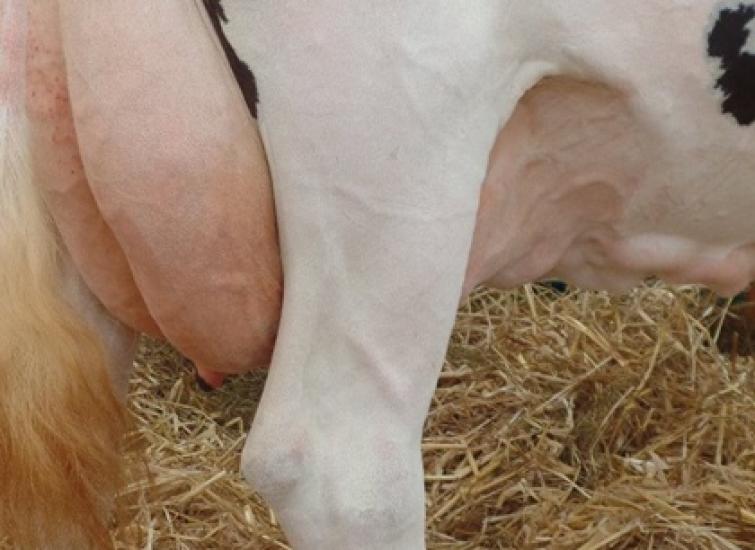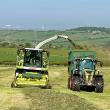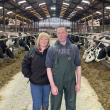"Since working with Advanced Robot, milk yield increased significantly from 29 to 35 kilograms, but milk solids have also been sustained at 4.6% butterfat and 3.4% protein, with total milk solids at 2.73 kilograms sold."
Think value not price
With the current commercial pressures on the UK dairy industry, UFAC-UK Sales Manager Mike Chown suggests farmers need to change the way they assess how they select feed inputs based on cow requirements, science and value.

I have spoken to a great many dairy farmers in the last three months and without exception the discussion turns to reducing feed costs and producing milk more cost effectively.
My response is to say, try to ensure you have quality forages, then not to think price, but to think value. Rather than saying 'I can save x pence if I cut something out', ask yourself 'what return will I get if I spend x pence, or how much do I risk losing if I cut something out and will the saving exceed the potential loss?'
When milk prices are low and margins tight, the emphasis has to be on feeding cows as well as we can so they can perform to their optimum, not cutting corners and hoping they will perform ok.
To achieve the best return, we need to think about what you are asking your cows to do, making sure you manage and feed them accordingly.
You want them to milk in a way that maximises the price achieved from your contract, a combination of good milk quality and hitting the profile. You also need to increase the prospects of keeping them on profile in the future, which means getting them back in calf. If going out to grass you want them to graze efficiently, maximising grazing hours and dry matter intakes, which is dependent on good foot health.
Achieving this level of performance will come from feeding the right feeds for your situation and working on return on investment, not price.
Top priority is optimal dry matter intake (DMI), and to achieve this we need to ensure rumen function is maximised i.e.
- adequate effective fibre supplied to control rumen pH to maximise fibre fermentation and volatile fatty acid (VFA) production
- rumen microbial protein requirements are met
- effective fermentable energy is not limiting
Once rumen function is maximised do not forget by-pass protein & energy. See limiting nutrient by yield in Table 1:

We must remember that to maximise DMI we have to pay significant attention to transition cow management and nutrition, in particular fibre, rumen protein, and by-pass protein. Poor protein metabolism increases muscle loss, along with lower insulin secretion, which means poor adaption to future energy demands i.e.
- lower glucose levels mean demands on fat and muscle tissue
- increased fat mobilisation
- body condition loss may be used as a glucose
- muscle tissue (protein) loss used as a glucose source
- muscle mass influences follicle and egg sizes
Therefore, we need to look at the total balanced diet.
New research helps to confirm correct total diet ration formulation and economic value; fats are a good example. If you feed on the cheap then you won't feed fats. If you feed for a return then the right fats have an essential place in diets, especially as cows go to grass when maintaining milk quality, fertility and mobility can be a challenge.
Research from Silvestre 2011 & Santos 2013, demonstrated the major impact of specific fatty acids, in particular Ω-3 fatty acids (EPA & DHA) as seen in Advanced Enhancer on dairy cattle performance and fertility.
Looking to the tables below, note the pregnancy rate, embryo loss and yield responses, with no adverse effect on butterfat.

Santos also looked at increasing the Ω-3 fatty acid ratio, as demonstrated by Advanced Enhancer, milk yield was increased.
Also, there is a positive immune response to feeding Ω-3 from fish oil as see in Advanced Enhancer.

It is also known that other fatty acids have a major impact on oocytes and embryo quality.
- C16:0 alone exerts negative effect on oocyte quality, hence lower implantation and higher death rates with these fats.
To increase overall fatty acid absorption and maximise food conversion efficiency, we must ensure there is post rumen glycerol so the free fatty acids are formed into triglycerides.
So as in Table 1, we must not forget by-pass protein and energy, including fats, as they are vital in optimising post rumen metabolic efficiency. In turn minimises negative energy balance and thus tissue loss, reduce stress and immune suppression. These dietary changes will improve herd mobility and increase milk yield along with improving follicle/egg size and fertility. Improved efficiency means cow stay longer in the herd thus increasing overall production, health and margins.

〈 BACK




